The taxi service was in state hands after World War II. In Budapest, Főtaxi and, to a lesser extent, Volán taxi carried passengers typically.
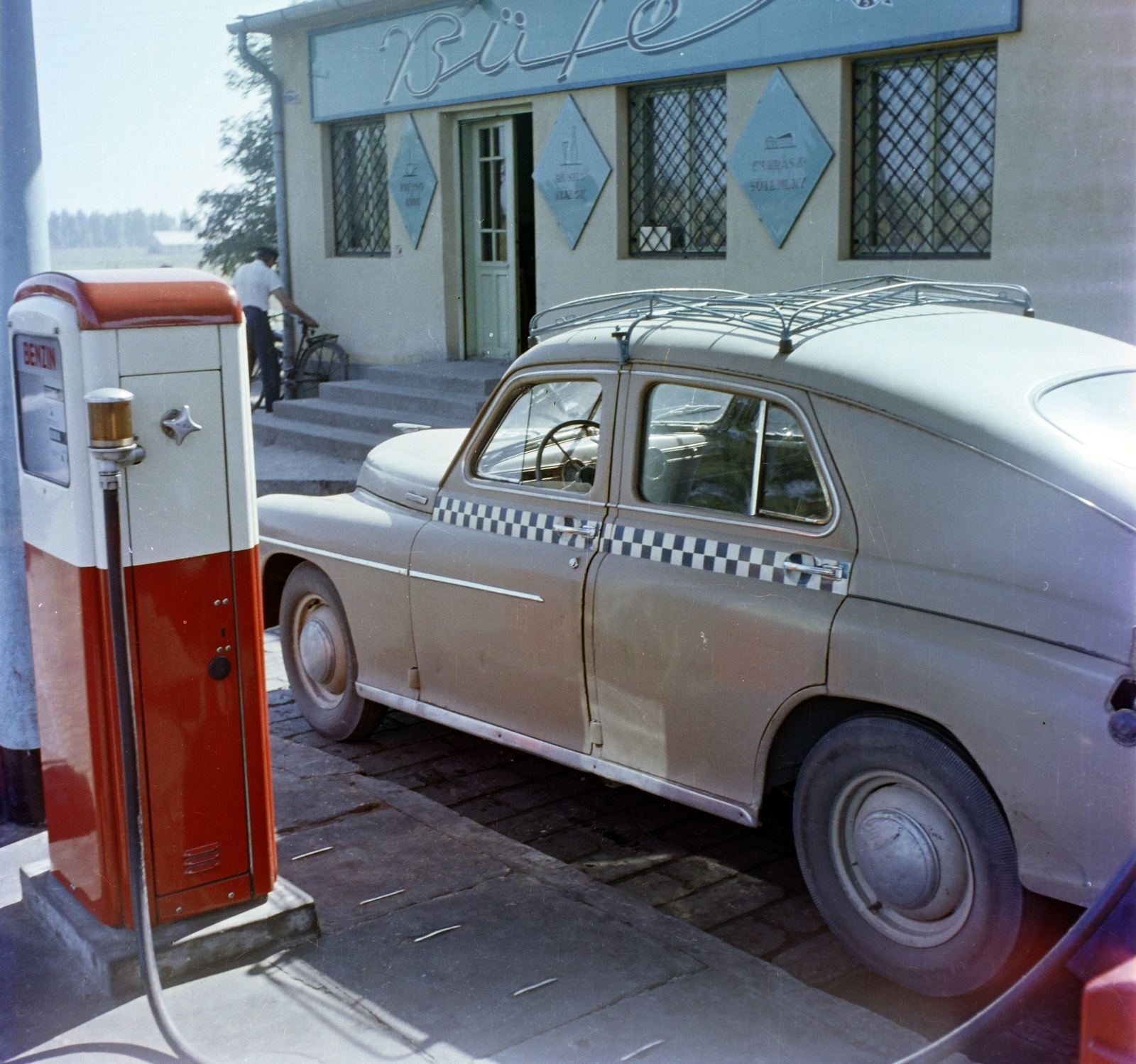
The cars of FőTaxi could be recognized from the checkered lane. In the 1960s, as in this picture, several types of vehicle were used by FőTaxi, this is a Warsawa (Photo: Fortepan / No.: 126341)
The vast majority of state taxis in the early 1980s were Ladas, distinguished from normal cars by the colour of their license plate, a taxi lamp on the roof and side decals, but the cars did not have a uniform colour. On the side of Főtaxi cars, there was the characteristic checkered strip, and the Volán taxis had their own logo on their doors.
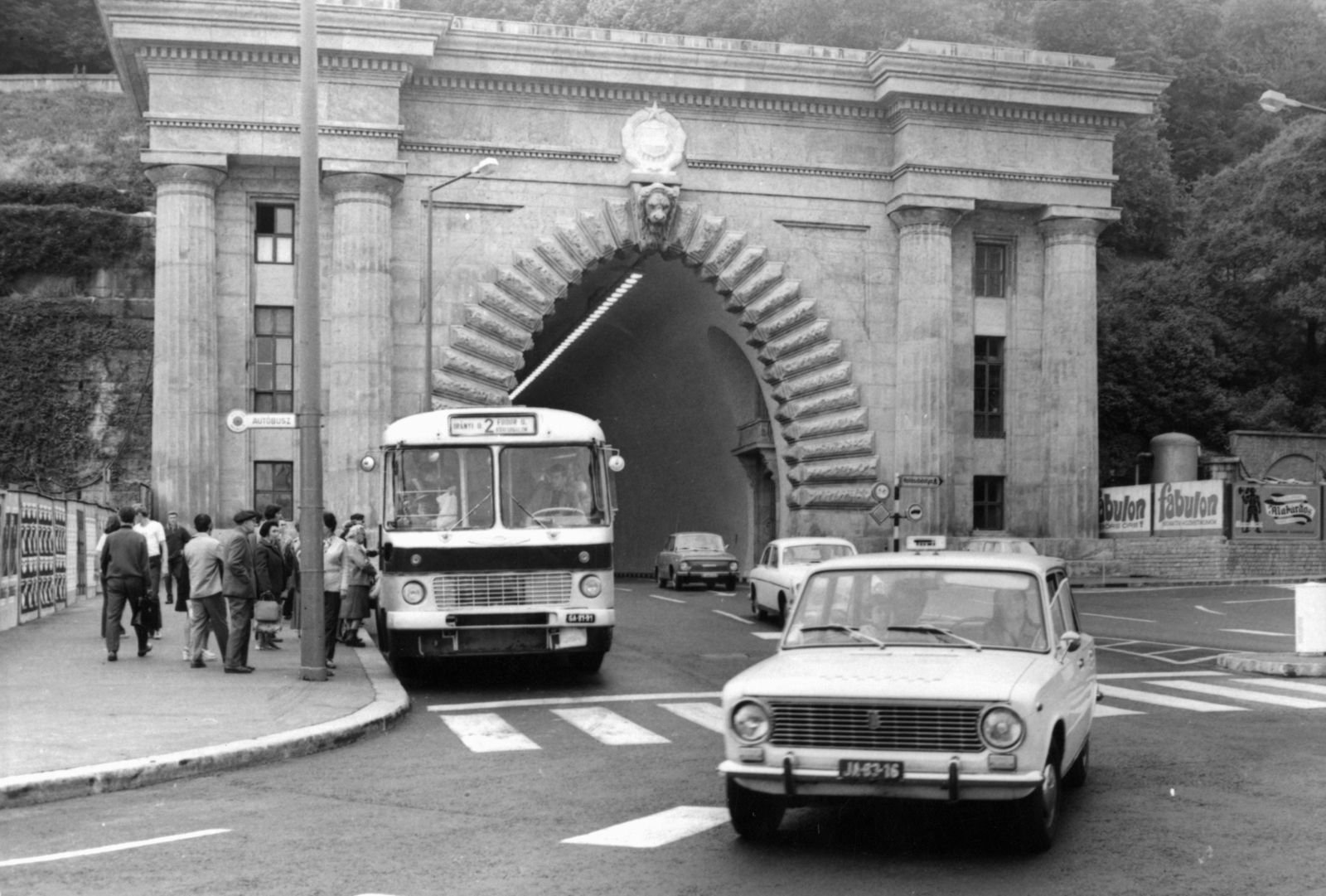
Főtaxi, Lada with white lettered license plate on a black background in 1975 . There were many, but not enough (Photo: Fortepan / No.: 212490)
Although Főtaxi was constantly increasing the number of its cars, it still didn't have enough taxis. Those wishing to travel had to wait a long time to find a free car, and neither the Főtaxi nor Volán taxi could fully fulfill all the telephone orders. However, on 1 January 1982, everything changed. From that day on, private taxis could also appear on the streets of the capital. Permits for private transport had to be requested from the Metropolitan Council.
Those could have been a private taxi driver who had a moral certificate, a license in the appropriate category, and had a technically sound car with at least 4 doors and at least 54 horsepower. In other words, the two-door cars, the Trabants and the Zaporozhetses, immediately fell out, but due to their performance it was not possible to drive Wartburgs or Skodas available in the era as taxis, as even the Skoda 120's performance fell short of what was required. Among the socialist cars, the Dacia could be considered, of which only the 1300s, the Ladas and the Zastavas. In addition, the cars had to be tested annually.
Private taxis not only coloured the supply, but also differed in prices. The official of the Ministry of Transport and Posts stated on Monday 22 February 1982 to the Hétfői Hírek:
“The private taxi driver obviously gives a discount if he doesn’t have a ride because a stationary car still costs more than a more modest fare. In addition, a table with guide prices will have to be placed in each car to inform passengers. It is now being prepared and its rate is approaching the rates for state taxis. Other higher individual tariffs may be developed, but only with detailed and acceptable price justification. Of course, that can also be subjected to a bargain. ”
In cars, the fare table had to be hung up, but taximeters were not mandatory in the early days. The reason for this was simply that taximeters were hard to come by and were very expensive. Főtaxi used West German taximeters, the price of which was 18,000 forints. The price of a simpler Hungarian taxi clock developed on behalf of the National Association of Craftsmen was also very high, costing 13,000 forints in 1982, and a roof-mounted taxi lamp that could be used by private taxis was still under development.
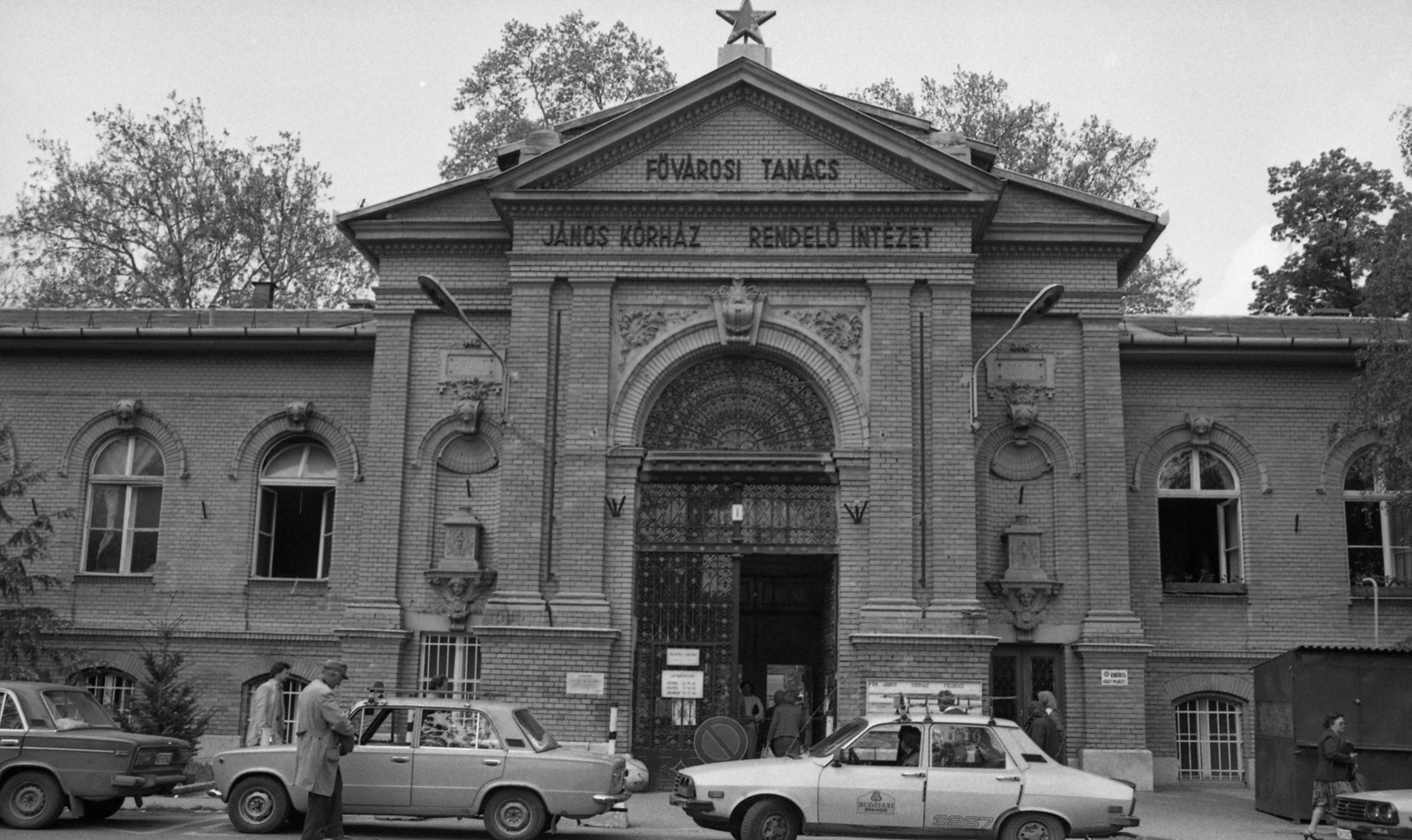
Private taxi in front of Szent János Hospital in 1989 (Photo: Fortepan / No.: 124712)
The legalization of private taxis regulated an existing system, black taxiing. Despite the thousands of cars of Főtaxi, those waiting for a taxi were often approached by private individuals who offered to transport them, for less than the cost of a taxi. On the other hand, the rupture of the socialist system began in the 1980s, with the private sector appearing legally in more and more places, with workers called maszek- a term formed from the first syllables of the words magán [private] and szektor [sector]. There were maszek boutiques, maszek lángos vendors and from 1982 maszek taxis.
The Budapest Socialist Council was not immediately rushed by the applicants, with only 174 applications received in the first month and a half, of which only 59 related to passenger transport and the rest to freight transport.
In response to the new availability, the then almost monopolistic Főtaxi also reacted, assigned 600 new cars to its 2,400 cars fleet, increased the number of cars equipped with VHF, so it was ready for the race.
Before private taxiing in early 1982, many did not see a serious future, as getting a car was not easy in Hungary in the 1980s. The cars sold by Merkur had to wait years, private taxis were not exempt from this, and as we have seen, only a small proportion of the vehicles available in Hungary were suitable for taxis. Behind the private taxis, there was no service background, a travel centre and nothing that characterizes a large company.
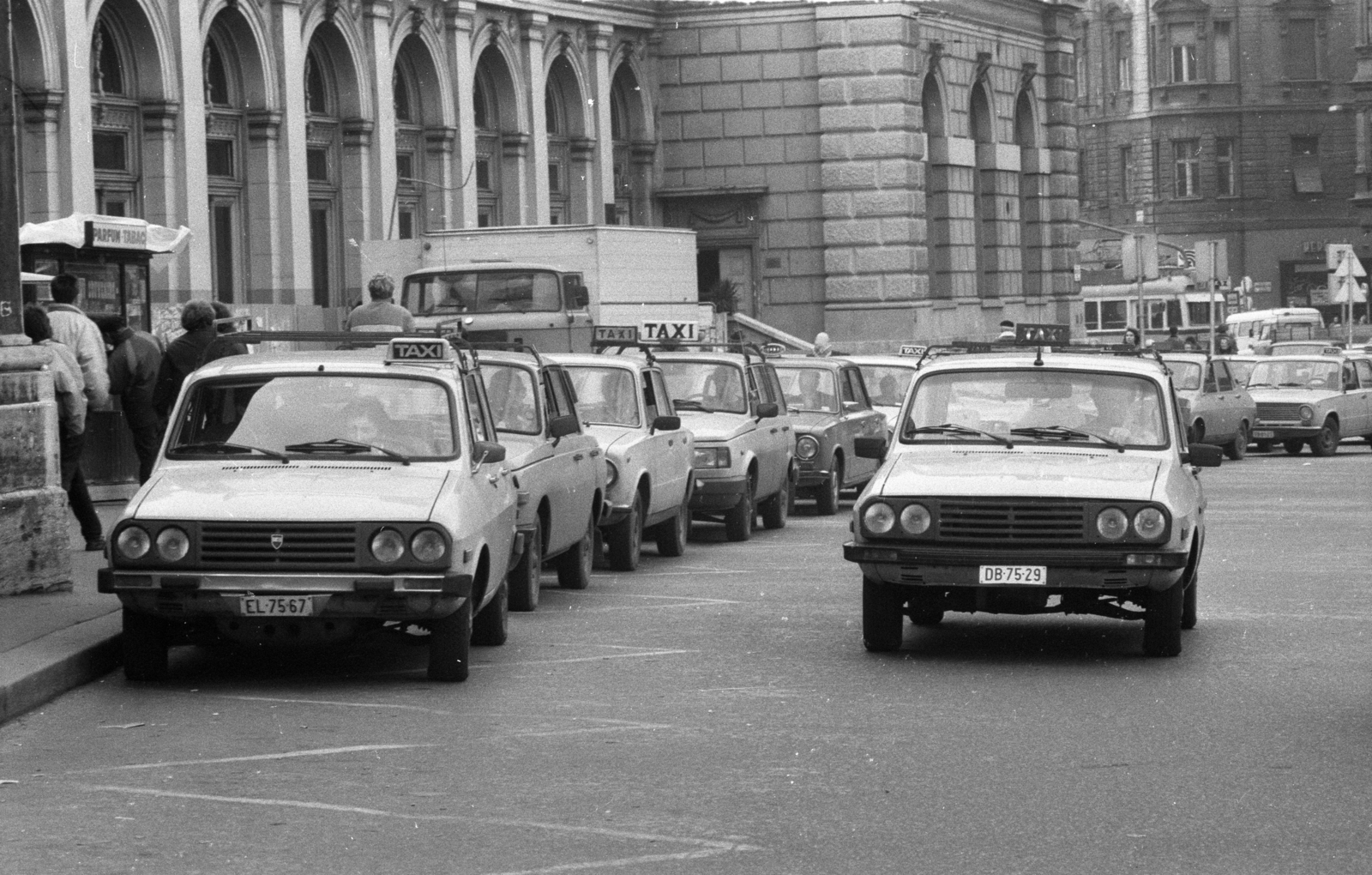
Private taxis waiting for passengers in Budapest in 1990 (Photo: Fortepan / No.: 76441)
Nevertheless, private taxis spread rapidly. As early as the end of 1982, there were 1,400 private taxis in Budapest, 400 of whom worked in second jobs. True, they had to deal with a lot of difficulties, such as not being able to get on the stations of Főtaxi.
In the following years, private taxis increased even more, and they were even organized into transport companies, and cooperatives were formed. Their activity was given a big boost by the fact that more and more used western cars came into the country, and these cars also appeared on the roads as taxis.
Cover photo: Police inspect a private taxi in 1983 (Photo: Fortepan, Magyar Rendőr)

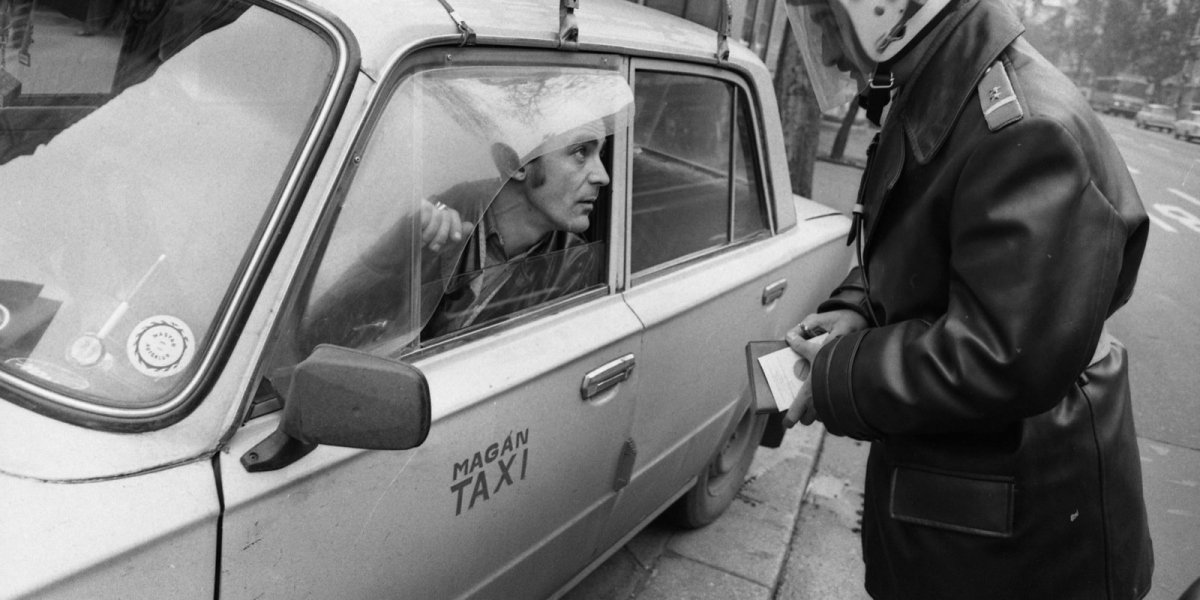


































Hozzászólások
Log in or register to comment!
Login Registration